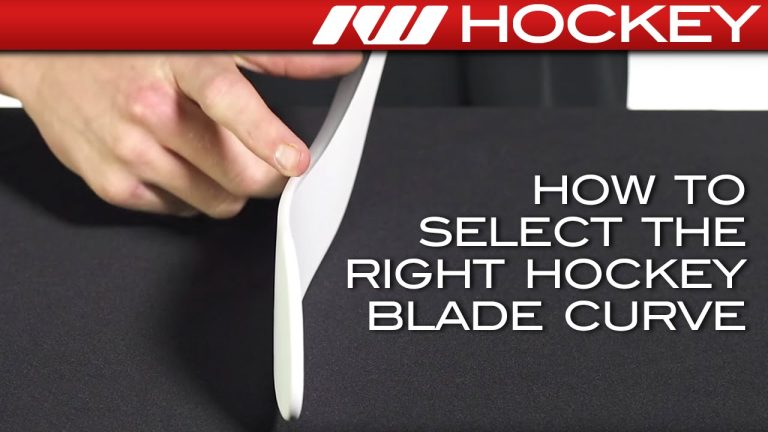
Enhancing Team Unity in Hockey: The Impact of Stick Tape Color
When it comes to team unity in hockey, every little detail counts – including the color of stick tape. In a sport that thrives on camaraderie and collaboration, players often use stick tape to not only enhance their grip on the stick but also to create a visual representation of their team spirit. From vibrant reds to bold blues, the choice of stick tape color can serve as a powerful symbol of unity on the ice. In this article, we will explore the significance of stick tape color in fostering team cohesion and how it has become an eye-catching aspect of the game.
What is the significance of the color of hockey tape?
The color of hockey tape can indeed make a difference in the game. White tape, in particular, offers several advantages. One of the main benefits is that it provides enhanced contrast between the puck and the background. This increased visual contrast allows players to more easily track the puck’s movement, making it easier to anticipate its trajectory and make quick decisions on the ice.
In a fast-paced game like hockey, where split-second decisions can determine the outcome, every advantage counts. The use of white tape on hockey sticks helps players to better perceive visual cues, giving them a competitive edge. By offering greater salience between the puck and the background, white tape allows players to quickly assess the puck’s direction and react accordingly. This can be a game-changer when it comes to passing accuracy, shooting precision, and overall gameplay strategy.
Moreover, the color of hockey tape also affects visibility for teammates and opponents. White tape stands out against the dark surface of the stick, making it easier for teammates to spot and anticipate passes. Simultaneously, it makes it more challenging for opposing players to track the puck and anticipate plays. By strategically using white tape, players can gain an advantage in both offensive and defensive plays, contributing to their overall performance on the ice.
What is the specific rule regarding stick tape in the NHL?
In the NHL, players have the freedom to use stick tape for reinforcement and improved puck control. This versatile tool can be applied anywhere on their sticks, allowing them to customize their equipment to their preferences. Whether it’s adding extra grip or reinforcing the blade, players can choose any color tape they like, making their sticks not only functional but also visually appealing.
However, when it comes to goalies, there is a specific rule regarding stick tape. They are required to have a knob of white tape or an approved protective material on the top of their sticks. This knob must be at least half an inch thick, ensuring that the goalie has a secure grip during intense gameplay. By enforcing this rule, the NHL prioritizes the safety and performance of its goaltenders, allowing them to make crucial saves with confidence.
Overall, the NHL rule on stick tape allows players to enhance their stick’s performance and control. From reinforcing the blade to adding extra grip, the players have the freedom to choose the color and placement of the tape. Goalies, on the other hand, must follow a specific guideline, using a knob of white tape or an approved protective material to ensure a secure grip. By striking a balance between customization and safety, the NHL ensures a fair and competitive game for all players.
What is the reason for hockey players taping their sticks differently?
Hockey players often tape their sticks differently for various reasons. One main purpose is to counter the smoothness of the blade. Most hockey blades have a slick surface, which can make it challenging to maintain control over the puck. By applying tape to the blade, players create a layer of friction that enhances their grip and control, enabling them to handle the puck more efficiently.
The choice of tape color and taping patterns is also a personal preference among hockey players. Some may prefer vibrant colors or patterns that make their sticks stand out on the ice, while others may opt for more subtle choices. Additionally, the direction of taping can vary. Some players tape their sticks from the toe to the heel, while others prefer taping from the heel to the toe. These variations in taping methods reflect the individual preferences and style of each player.
In conclusion, hockey players tape their sticks differently to improve their control over the puck and compensate for the slickness of the blade. The choice of tape color and taping patterns is a matter of personal preference, allowing players to express their individuality on the ice. Whether it’s the direction of taping or the vibrant colors, these variations contribute to the unique style and performance of each player.
Uniting Hockey Teams: The Surprising Influence of Stick Tape Color
Uniting Hockey Teams: The Surprising Influence of Stick Tape Color
In the fast-paced world of hockey, where teamwork is paramount, one might not expect something as seemingly trivial as the color of stick tape to have any significant impact. However, recent studies have revealed that the choice of stick tape color can actually play a crucial role in uniting hockey teams and enhancing their performance on the ice. The color of stick tape serves as a visual cue, facilitating better communication and coordination among teammates, ultimately leading to improved teamwork and a more cohesive playing style. Whether it’s the vibrant red tape that instills a sense of confidence and aggression or the cool blue tape that promotes a calm and composed approach, the choice of stick tape color has emerged as a surprising but effective means of bringing hockey teams together and maximizing their collective potential.
The Power of Stick Tape Color: Strengthening Team Bonds in Hockey
In the fast-paced world of hockey, where split-second decisions can make or break a game, the power of stick tape color cannot be underestimated. It may seem like a small detail, but the choice of tape color can have a profound impact on team bonds and camaraderie. When players step onto the ice, their sticks become an extension of themselves, and the color of their tape becomes a symbol of unity. By coordinating stick tape color, teams create a visual representation of their shared goals and values, fostering a sense of belonging and boosting team spirit. This simple yet powerful tool unites players, strengthening their bonds and fueling their drive for victory.
The influence of stick tape color extends beyond the rink, permeating every aspect of a team’s identity. From jerseys to equipment, the color scheme chosen for stick tape creates a cohesive and visually striking look that unifies the team both on and off the ice. This unified appearance not only instills a sense of pride among players, but also leaves a lasting impression on fans and opponents alike. The power of stick tape color lies in its ability to create a strong and recognizable visual identity, making a team stand out and leaving a lasting impact on the hockey world. In a sport where teamwork and unity are paramount, the choice of stick tape color becomes a powerful tool for strengthening team bonds and forging a path to success.
Beyond the Game: How Stick Tape Color Can Enhance Team Unity in Hockey
In the fast-paced and physically demanding world of hockey, every detail matters. Beyond the game itself, team unity plays a crucial role in determining a team’s success. One often overlooked aspect of team unity is the color of stick tape used by players. By coordinating the color of their stick tape, players create a visual representation of their shared goals and values. This simple yet effective gesture fosters a sense of camaraderie among teammates, allowing them to perform at their best and work together seamlessly on the ice. Whether it’s a vibrant red tape symbolizing passion and determination or a cool blue tape representing trust and loyalty, the color of stick tape can enhance team unity and create a powerful visual statement on and off the rink.
Stick Tape Color: The Secret Weapon for Building Stronger Hockey Teams
Paragraph 1: Introducing Stick Tape Color as the Secret Weapon for Building Stronger Hockey Teams
In the world of hockey, every small advantage can make a significant difference. That’s why teams are always on the lookout for innovative strategies to gain an edge over their opponents. Enter stick tape color, the secret weapon that has been revolutionizing the game and helping teams build stronger lineups. This seemingly minor detail plays a crucial role in enhancing players’ performance, boosting team morale, and ultimately leading to greater success on the ice.
Paragraph 2: Enhancing Performance with Stick Tape Color
Stick tape color may seem like a trivial matter, but its impact on players’ performance is nothing short of extraordinary. Research suggests that the color of the tape can affect a player’s focus, hand-eye coordination, and overall shooting accuracy. Bright colors, such as neon green or vibrant orange, have been found to improve concentration and increase visual acuity, enabling players to make split-second decisions with precision. By utilizing stick tape color strategically, teams can enhance their players’ performance and gain a competitive edge on the rink.
Paragraph 3: Fostering Team Unity and Morale
Team unity is the cornerstone of success in hockey. Stick tape color serves as more than just a performance-enhancing tool; it also creates a sense of camaraderie among teammates. When players sport the same color tape, it promotes a feeling of belonging and unity, fostering a stronger team bond. Moreover, the vibrant tape colors act as a visual representation of the team’s identity, boosting morale and instilling a sense of pride. By embracing stick tape color as part of their team culture, coaches can create an environment that breeds teamwork and empowers their players to achieve greatness together.
In the fast-paced world of hockey, the color of stick tape may seem like a trivial detail. However, the significance it holds in fostering team unity should not be underestimated. From the moment players step onto the ice, the vibrant tape signifies a shared commitment and a common goal. As they pass, shoot, and score, the tape binds them together, reminding them of their collective strength. So, whether it’s black, white, or any other color, the tape serves as a visual representation of the unwavering bond among teammates, creating a powerful sense of camaraderie on and off the rink.



